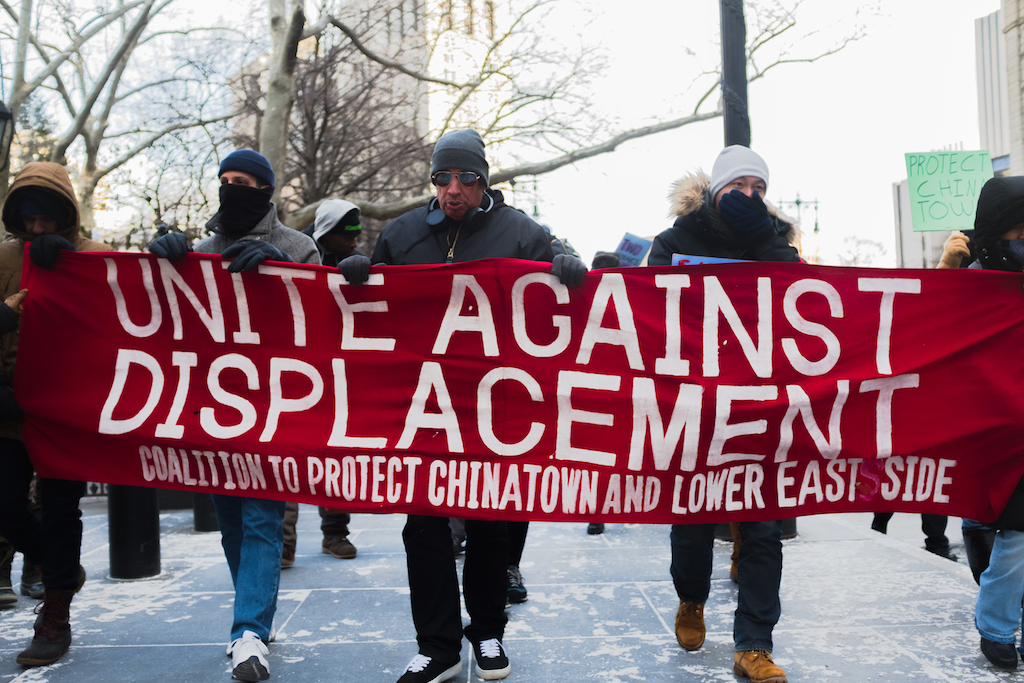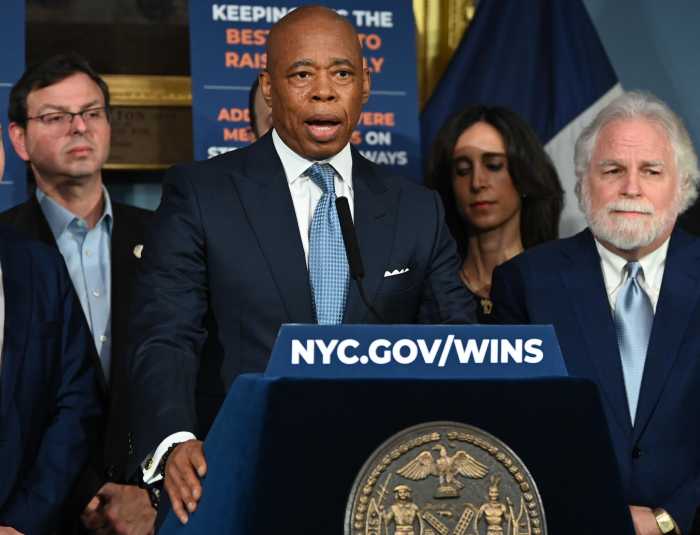BY LYNN ELLSWORTH | If you disagree with some or all of Mayor de Blasio’s affordable housing strategy, you now risk being shot with the rhetorical bullet of NIMBY in an effort to take you out of the policy debate.
Sadly, such weaponized use of the NIMBY (Not in My Backyard) insult has spread like a plague from the real estate and planning community to journalists. Ginia Bellafante’s column in the Times of last Sunday is just the latest example among many. In the piece, Belafonte accuses supporters of the Elizabeth St. Garden and the Brooklyn Botanic Garden of a crude NIMBYism.
That’s weird.

In each case, garden supporters found an alternative site that the city appeared ignorant of, either of which would provide more affordable housing than the garden site in question. And if Belafonte had spoken to the Crown Heights groups opposing the 39-story tower, she might have learned about other ways to build affordable housing in Crown Heights.
At Human-Scale NYC, we favor an alternative to de Blasio’s “shock and awe” style of overbuilding: namely, constructing 100-percent permanent affordable housing at countless sites across the city at a human scale, while respecting historic fabric, light, libraries and public green space. Win-wins among these public goods are possible when developers aren’t in charge of policymaking.
De Blasio and the real estate industry love the game they control, in which they get to unnecessarily pit various public goods against affordable housing. They get to define what affordable housing is, and they get to declare affordable housing as the winner in any trade-off — just like Trump gets to declare his right to build a wall. Anyone who resists any part of this gets shot with a NIMBY bullet.
All this started early in de Blasio’s administration when then-Deputy Mayor Alicia Glen told incoming appointed commissioners to the Landmarks Preservation Commission to “stand down” regarding the public good of historic preservation in the face of the affordable housing “crisis.”
Such a style of operating is the real estate industry and de Blasio’s M.O.: Blow a problem up to DEFCON 1 red-alert levels with fuzzy demographic data, questionable industry-sponsored reports, and a huge amount of lobbying and public-relations money. While the sirens are blaring and pols are running for cover, use the ensuing panic to get what you want out of the politicians: less regulation and the right to build towers anywhere you want to, all while falsely claiming to be solving your version of the crisis.
Long ago, NIMBY referred to taxpaying, homeowning voters who disputed the location of “public goods.” Often they proposed a better location. Sometimes they were wrong — but just as often, they were right. But their very existence infuriated planners, economists and boss politicians who had convinced themselves that they alone had Godlike perfect wisdom in where to build public goods.
Sometime later, Jane Jacobs’s book on the disaster of urban renewal and Robert Caro’s book about Robert Moses came out. Both put a decisive end to the quaint notion that expert planners and “Honest Joe” politicians knew best about public-good trade-offs. Or so we thought.
In 2005, conservative economist William Fischel published a book accusing suburban taxpayers and voters who own their own homes — and then bother to engage in battles over public goods — of being greedy bastards merely working to protect their property values in the old cul-de-sac. Planners who hated suburbia jumped on board with Fischel’s “Homevoter Hypothesis,” even though there wasn’t much data to back it up. Anti-regulatory, free-market-style planners also liked the idea.
The upshot is that the word NIMBY is now everywhere embedded like a carbuncle into what planners read when they become planners.
Fischel and his followers have taken away the status of “citizen” from suburban homeowners and turned them into a kind of contemptible golem — people without rights, the villains of the planners’ version of events.
Who now enters the scene but anti-regulatory planner Vicki Been, who works at the Big Real Estate-funded Furman Center at New York University. She is also de Blasio’s former housing czar. Just last year, she came out with a rambling paper called City NIMBYs, in which she argues that anyone who disagrees with de Blasio’s affordable housing strategy must not be a thinking, voting, taxpaying citizen of the city with a brain, but instead an urban version of Fischel’s infamous suburban NIMBY, incapable of understanding the public good as laid out for them by herself, Alicia Glen, and de Blasio.
To all this history we have to add another character, first described in the 1970s as “the growth machine,” in a book by Harvey Molotch. The growth machine is the union of self-serving real estate interests, architects, engineers, construction unions and corrupt politicians who sold out the public good and built all the horrifying strip malls, subdivisions and sprawling car-dependent disasters that James Kunstler in 1993 described as “Clusterf— Nation.” In New York City, we would recognize that growth machine as the Real Estate Board of New York and its associated skyscraper cheerleaders who claim that their way is the only way to the public good. With vast amounts of money behind them for lobbying and public relations, it is hard not to see that the growth machine has long been in charge of land use in New York City, regardless of who is elected. Thinking voters therefore have a reason to smell a rat whenever land-use ideas pop up here in Gotham.
In such a situation, the weaponization of the word NIMBY raises a huge conundrum: Who is the guardian of the public good when special interests like the growth machine fund the politicians, get their own people appointed to all the regulatory agencies that deal with real estate, fund the think tanks and also buy monthly real estate supplements in the “independent” press?
What do we do when those with power respond to legitimate, fair, intelligent disagreement with contempt and name-calling?
Obviously, there is much to be done to rectify the situation. But we can always start by being more civil and thoughtful merely by retiring the word NIMBY from our public policy discourse.
Ellsworth is chairperson, Tribeca Trust, and president, Human-Scale NYC


































